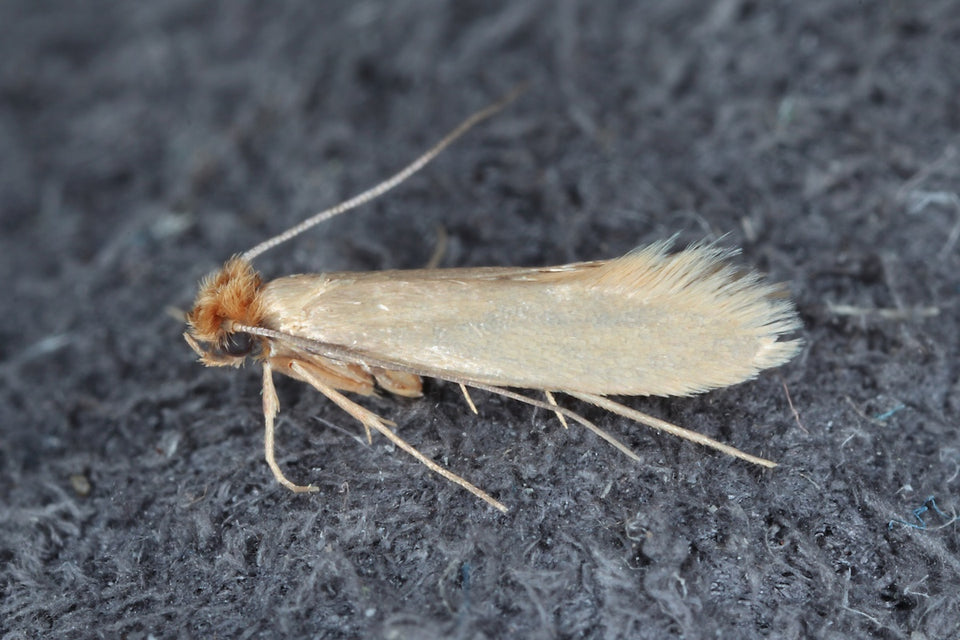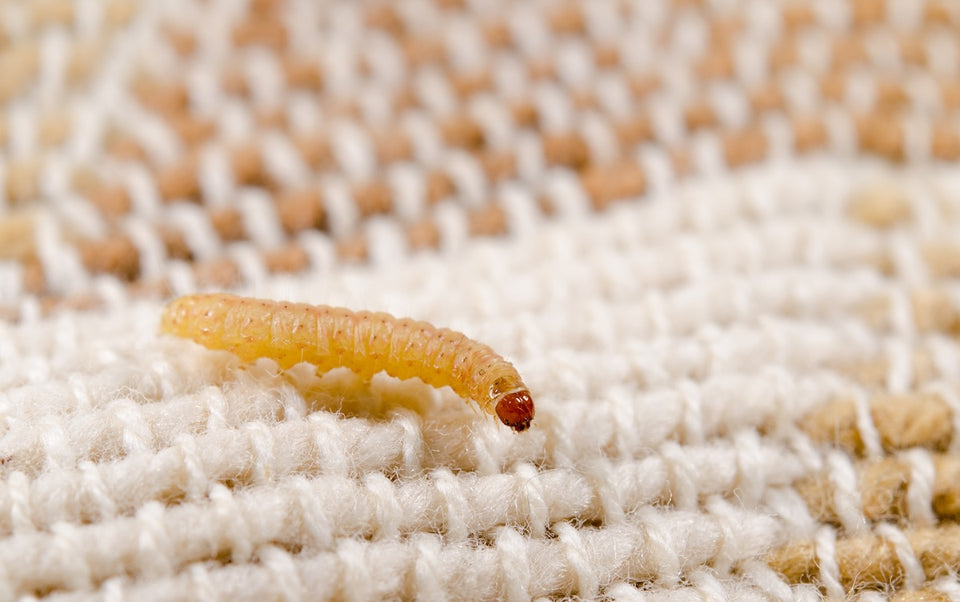Where Do Moths Go in Winter and How to Stop Them

When the weather turns cold, it is easy to assume Clothes Moths disappear until spring. After all, you rarely see them flying at this time of year. But if you have ever found holes in woollens, silken linings, or hidden areas of knitwear during winter, you know that is not the full story.
So, where do moths go in winter? The answer is that they do not go anywhere. Clothes Moths survive year-round inside UK homes, making use of dark, undisturbed spaces and the consistent warmth of central heating. To understand how to stop them, it is important to look at their life cycle and how it continues, even when you cannot see obvious signs of activity.
Why Moths Seem to Disappear When It Gets Cold
The biggest misconception is that moths die off or vanish once the temperature drops. In reality, the moth life cycle simply slows down. Adult moths live only 30 to 45 days, and in summer you notice them more because the warmth speeds up development, producing more adults at once.

In winter, adult emergence is less frequent, and those that do appear are far less visible. Unlike many other moth species, Clothes Moths avoid light. They keep to dark corners, remain close to the floor, and stay hidden in folds of fabric or the edges of wardrobes. Meanwhile, the most damaging stage — the larvae — continues feeding steadily on natural fibres.
This means infestations often persist throughout winter, only to flare up again in spring when rising temperatures accelerate the cycle. Without intervention, the problem does not disappear; it simply becomes less visible.
How Clothes Moths Survive the Colder Months
Clothes Moths, especially the common Webbing Clothes Moth, lay eggs directly onto fabrics that contain keratin, the protein found in animal-based fibres such as wool, silk, cashmere, fur, and feathers. Once laid, eggs can hatch in as little as 4 to 10 days, releasing larvae that begin feeding immediately.

The larval stage is by far the most destructive and can last from several weeks to many months depending on warmth, humidity, and food availability. In centrally heated UK homes, larvae continue feeding throughout the colder months, damaging garments stored in wardrobes, drawers, lofts, and other undisturbed spaces.
When temperatures rise again in spring, any surviving larvae pupate and emerge as adults ready to breed, restarting the cycle. This is why a small infestation that survives the winter can quickly escalate into a much larger problem as the weather warms.
Why Traps Still Matter When You Don’t See Moths
Because moth activity is less visible in colder months, monitoring with traps is even more important. Clothes Moth Traps attract and catch active adult males, reducing the breeding cycle and giving you a clear indication of whether moths are still present in your home.

Even if you do not see moths flying around, adults can still emerge inside warm wardrobes at any time. Traps provide early warning and help interrupt the moths before the breeding increases in spring. For best protection, traps should remain in place inside wardrobes and cupboards all year round and be replaced every 12 weeks, or when traps are full, to ensure they remain effective.
Protecting Your Home Through the Colder Months
Protecting clothing from moth damage in winter is about maintaining consistent habits rather than relying on a single clean.
For clothing, always wash or dry clean garments before putting them into storage. Clothes Moths are strongly attracted to fibres carrying traces of perspiration, food, or body oils. Store them in breathable cotton garment bags rather than plastic covers, which can trap moisture and create problems with mould. Wardrobes and drawers should be kept clean and free from dust, lint, and pet hair — all of which larvae can feed on. Where possible, move garments around from time to time; even small disturbances discourage females from laying eggs.
Most importantly, keep traps active year-round. By maintaining a continuous monitoring system, you ensure that any adult moths emerging in winter are detected before they have the chance to reproduce. This consistency is what stops a quiet winter infestation from becoming a full-scale outbreak in spring.

Your Winter Moth Questions, Answered
Do Clothes Moths die off in winter?
No. While outdoor moths slow down in cold weather, Clothes Moths survive easily indoors because central heating provides warmth. Eggs, larvae, and pupae all remain viable in wardrobes, cupboards, and carpets.
Why do I not see moths flying in winter?
Clothes Moths are not attracted to light and prefer dark, undisturbed areas. In winter, fewer adults emerge, and those that do tend to stay hidden. You may not see them, but larvae often remain active and feeding.
What stage of the life cycle survives winter?
All stages can survive indoors. Eggs hatch within days, larvae feed for weeks or months, pupae may remain dormant until conditions improve, and adults can emerge even in the colder months.
Do I still need traps in winter if I do not see activity?
Yes. Traps catch adult males even when numbers are low, acting as both an early warning and a way to reduce breeding. Without traps, you may only discover the infestation once holes appear in clothing.
Will the infestation return in spring?
Yes, if it is left untreated. Larvae that survive the winter pupate and emerge as adults in spring. Unless the cycle is broken with traps and preventative care, the population will continue to grow.
Are Clothes Moths only drawn to luxury fabrics?
No. Clothes Moths are purely interested in the keratin content which is the protein found in animal-based fibres. Everyday wool jumpers are just as vulnerable as expensive silk blouses or cashmere coats.
About MothPrevention
MothPrevention® speak to customers every day about their clothes moth issues - clothes moths are a species that are ever increasing and that can cause significant damage to clothes, carpets and other home textiles.
To date, we’ve helped over 250,000 customers deal with their moth problems. We have developed professional grade solutions including proprietary pheromones and trap design engineered to the highest production standards.





